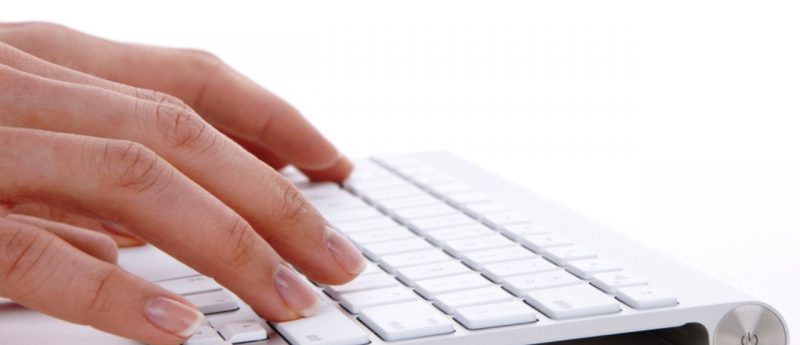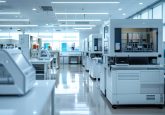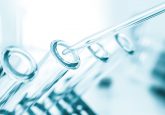Ask the Expert on Microsampling ¦ Craig Aurand (Supelco/Sigma-Aldrich)

Craig Aurand is the Innovation Manager for the Advanced Analytical division of MilliporeSigma. Craig’s primary role is identification and development of innovative analytical techniques for life science applications. He is responsible for the development of innovative chromatographic and sample preparation devices for life science applications, and has published numerous presentations and publications focusing on novel chromatographic separations and sample preparation techniques. Craig has more than 15 years experience in product and application development with emphasis in liquid chromatography/mass spectrometry techniques. His most recent research has focused on the field of microsampling techniques in bioanalysis.
In this ‘Ask the Expert’ feature, we will be discussing recent developments in microsampling with leading experts in the field. We will discuss the various microsampling techniques, as well as the advantages of the method and the challenges faced by bioanalysts when applying the method in their work.
In this instalment, Craig Aurand, Innovation Manager at Supelco/Sigma-Aldrich, a part of MilliporeSigma (Bellefonte, PA) shares with us his thoughts on advances in the field and some of the recent developments.
Microsampling techniques have gained growing interest over the last few years – do you think advances in these techniques will continue to draw interest?
The ability to obtain high quality data from a minimal amount of sample is a goal for all bioanalytical assays. Simplifying the process to achieve accurate data downstream will greatly improve the ability to rapidly diagnose and treat a subject to improve overall quality of life. One such improvement is reducing impact on the test subject; this is an area where microsampling can greatly improve current practices. Also, as the acceptance of LC–MS based assays become more widespread, the need for collection of large volume samples becomes unnecessary.
What have been the most exciting developments in microsampling techniques in recent years?
The development of solid phase microextraction (BioSPME) devices with sorbent materials that enable the capturing of free fraction analytes has been an exciting development. This technique allows for the differentiation of bound analytes versus free circulating components within the test subject. Some of the BioSPME devices are intended for direct insertion into test subjects, eliminating the need to draw samples from these subjects all together. A group at GSK has published studies where solid phase microextraction devices were inserted directly into mice tails as part of pharmacokinetic (PK) evaluations. This approach is quite exciting in that an entire PK study can be completed on a single mouse, eliminating the need for terminal serial blood draws.
Other exciting areas have been the development of devices to overcome the impact of blood hematocrit; this has been addressed using various techniques such as: fixed volume absorbent materials, membranes over absorbent media to prevent absorption of whole blood cells, and capillary collection devices.
What are some advantages of the various microsampling techniques currently available?
Capillary collection and DBS media are intended to reduce the complexity of the sampling process and allow for minimum required sample to be acquired remotely. This reduces the need for onsite collection laboratories, and can allow patients to sample themselves with proper training.
Advantages of solid phase microsampling (BioSPME) include isolation of unstable metabolites, differentiation of free fraction versus protein bound analytes, and in situ sample clean up.
One exciting area of development is direct MS analysis from DBS and BioSPME devices by use of direct MS interfaces such as DESI and DART. In some cases, these techniques entirely eliminate the LC portion of the assay, allowing for rapid direct analysis and real time monitoring.
Are current microsampling techniques easily amenable to automation?
One area to address for this topic is post acquisition of sample, or how easily microsampling devices can be transferred into an automated workflow. In all cases, the sampling devices need to allow for sample identity to be retained during transfer into the sample preparation workflow. In some cases, the sample preparation can be executed using robotic liquid handling systems or other automated workflows. In the case of DBS media, this necessitates the selection of a spot either using a punching system or online desorption. In each case, optical systems that can recognize the optimum location to punch or desorb are necessary.
There are devices that are designed to work with liquid robotic systems. Solid phase microextraction (BioSPME) along with a few absorptive media devices have been developed on 96-well tip platforms. This allows for automated post collection processes, such as sample preparation and desorption.
Are additional considerations for matrix effects necessary for microsampling techniques?
Most microsampling techniques, such as capillary and DBS devices allow for collection of small volumes of sample. The benefit of small sampling can be lost due to the need for additional dilution of the sample and incurred matrix effects. In the case of capillary sampling, the samples require protein precipitation which can result in a fourfold dilution of the original sample. Similarly, DBS techniques require a subsample of the total blood spot to be removed and desorbed. This too greatly reduces the overall sensitivity of the sampling method. In both cases, the co-extracted matrix has the potential to cause interferences unless additional sample preparation steps are incorporated into the workflow.
One interesting observation with the BioSPME technique is that it allows for concentration of target analytes, while inhibiting the absorption of matrix. This technique allows for extraction of target analyte with the incorporation of sample clean-up simultaneously. BioSPME has shown to differentiate sample matrix, such as phospholipids, from target analytes to allow for cleaner collected samples as compared to other microsampling techniques. This technique also allows subsequent concentration of target analyte through minimal desorption solvent necessary to displace the analytes from the device.
In all cases for microsampling, the ability to differentiate target analytes from sample matrix impacts the overall precision of the method and resulting acceptance of the technique.
How important is the determination of free circulating analyte in bioanalysis?
This has been a growing topic of interest. Assays in clinical applications where steroid and hormone identification necessitate the determination of free circulating levels have gained substantial interest in recent years. This is typically achieved through membrane dialysis techniques which are not amenable for most microextraction techniques. One microsampling technique that has demonstrated the ability to differentiate circulating analyte versus protein bound analyte has been solid phase microextraction. This technique allows for direct measurement of free circulation fraction by shielding larger molecular weight species, such as protein bound analytes, from binding onto the sampling device.
What do you think remains the greatest challenge to microsampling?
Because there is such a long and well known history of data collected using plasma derived assays, introduction of any new sampling technique will necessitate thorough validation and statistical comparison to this historical technique. This may require replication of sample collection during the validation and early stage studies.
Do you believe microsampling techniques will ever be universally accepted in the bioanalytical community or do you see them becoming reserved for more niche applications?
Microsampling, as with other sampling techniques, certainly has its utility for specific applications. To say that one sampling technique is acceptable for all assays would be quite limiting. There will be continued growth in this area, but microsampling techniques will be complimentary and in some cases displace existing accepted methodologies.
How do you see microsampling techniques evolving over the next 5–10 years?
Advancements to provide real time patient diagnostics are becoming closer through the innovations in microsampling. The development of MS based platforms with simplified user interface has the potential to make bedside therapeutics more common in the near future. The advancements in direct MS analysis using devices such as DESI and DART have shown the potential for accurate and rapid assessments with minimal sample. Microsampling will continue to play an important role in the advancement of direct analysis.
There will be continued advancements in the specificity of microsampling techniques. Microsampling devices containing antibodies for highly specific assays are within the foreseeable future. Evolution of microsampling with biosensors has the potential to allow rapid patient assessment in under developed countries that do not have access to advanced laboratory techniques.
To learn more about solid phase microextraction for use in bioanalytical assays, please visit sigmaaldrich.com/biospme.
Read previous instalments of Ask the Experts on Microsampling featuring Tim Sangster, Christopher James (AMGen, Inc.), Stuart Kushon (Neoteryx) here.
This instalment of Ask the Experts was featured in an interactive supplement on microsampling published on Bioanalysis Zone. Click here to read the complete supplement.





